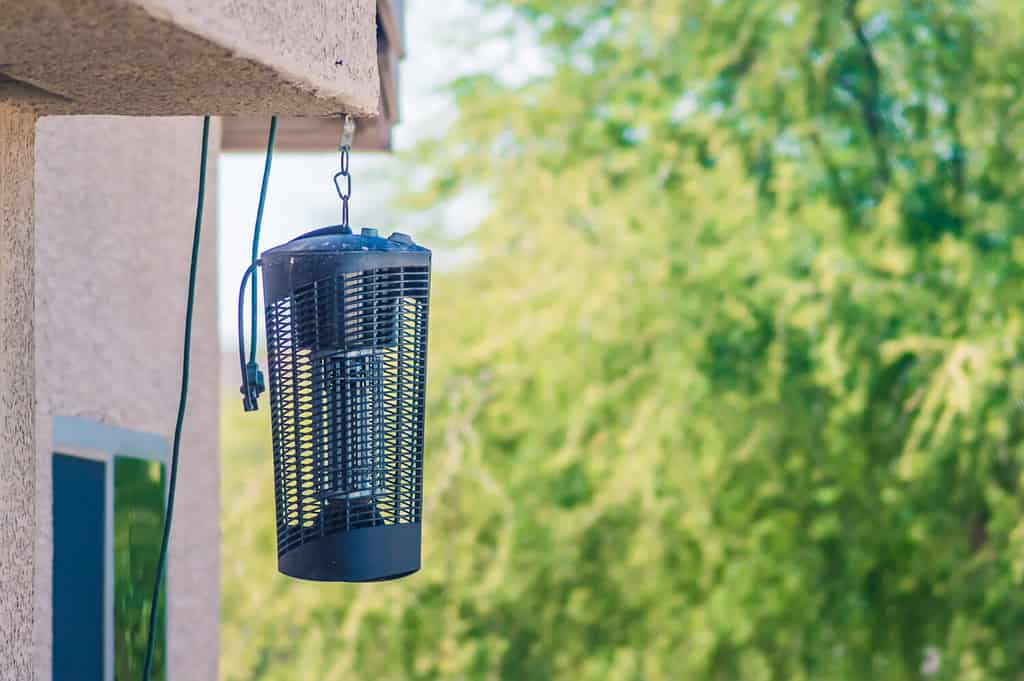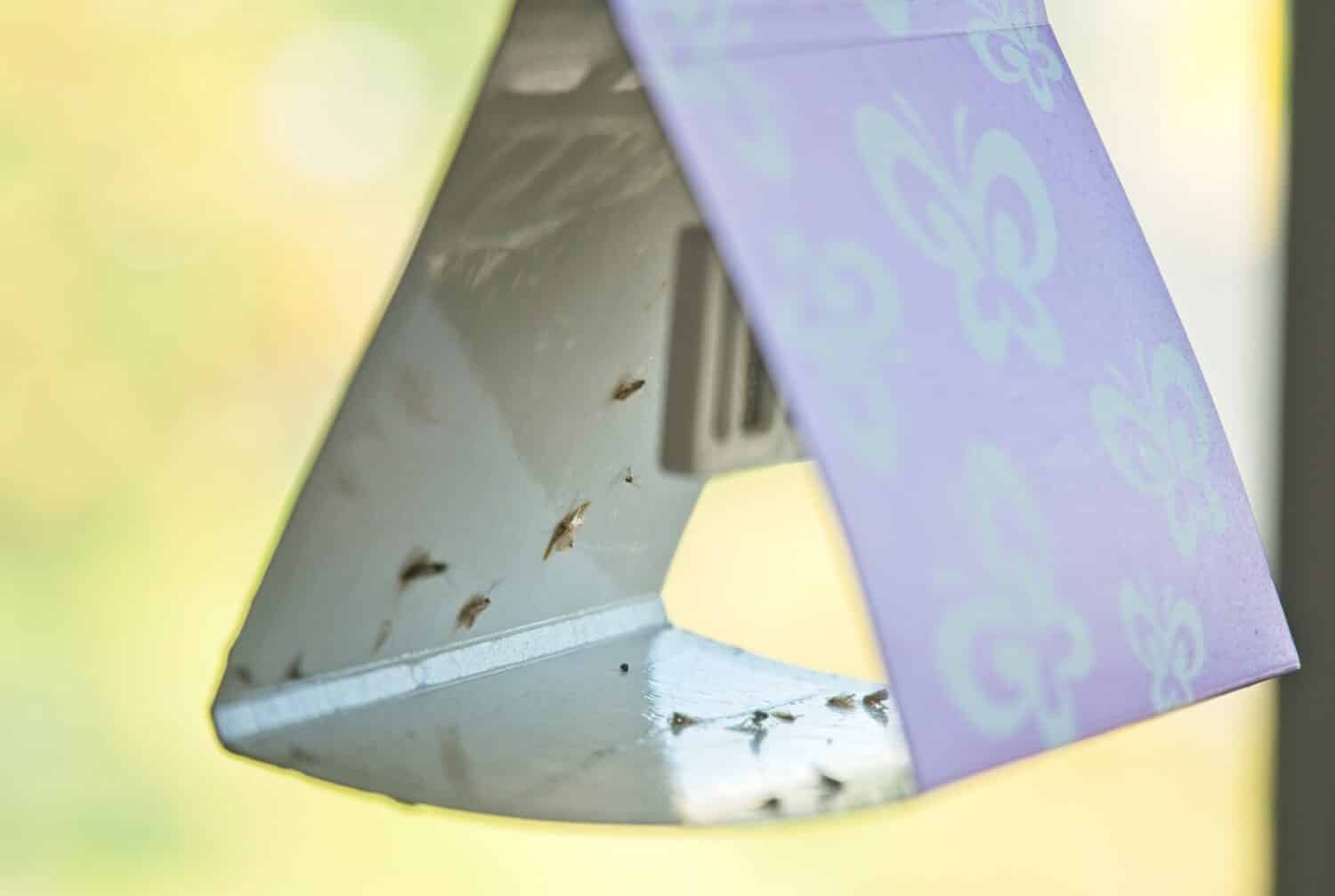When you are spending quality time in your outdoor space, the last thing you want is a moth invasion spoiling the serenity. Lights attract moths, and unfortunately, moths also wreak havoc on landscapes. However, there are outdoor moth-repellent solutions to keep them off your porch. Discover ten proven and practical methods to repel moths tailored for outdoor spaces. From natural remedies to modem solutions, these strategies will ensure that moths do not dim the brilliance of your outdoor moments.
1. Citronella Candles
These candles are a reliable and natural solution to keep moths and other annoying insects away from your porch. Citronella oil, extracted from citronella grass, has effective insect-repelling properties. To humans, citronella candles release a delightful, lemony scent. However, for insects, they act as a powerful deterrent.
Moths are highly sensitive to odors, and the scent of citronella disrupts their olfactory senses, making it difficult for them to locate their usual sources of attraction, like porch lights and human odors. Place citronella candles around your outdoor space to form a protective perimeter. The flickering light not only adds an inviting glow to your porch but also keeps moths and mosquitoes at bay.

Citronella does not repel beneficial insects like bees or spiders.
©Ana Belen Garcia Sanchez/Shutterstock.com
2. Bug Zappers
Bug zappers, those electrifying devices that emit a soft, ultraviolet glow, are not only a staple for keeping mosquitoes and other flying pests away but are also effective tools in your battle against moths. These pesticide devices attract insects with their ultraviolet light, while an electric grid zaps them upon contact.
While bug zappers primarily target mosquitoes and flies, their enchanting glow also draws in moths. Strategically hang a bug zapper near your existing porch light to attract pests and clear your porch.
Additionally, one advantage of bug zappers is their autonomy. They continuously attract moths and other flying insects and require no work from you aside from turning the device on. The hands-free approach means you can enjoy your porch without constantly monitoring or applying repellents.
However, while bug zappers are effective at reducing moth populations around your porch, they may not be the most energy-efficient option. Consider using them only during peak moth activity hours, such as dusk and dawn, to minimize their impact on your energy bill.

Bug zappers lure more than 10,000 insects per evening.
©GreatSnapz/Shutterstock.com
3. Outdoor Fans
When it comes to creating a comfortable and moth-free outdoor space, fans are an effective yet often overlooked solution. While they primarily keep you cool during hot summers, outdoor fans also disrupt moth flight patterns and make it more challenging for these winged insects to settle on your porch.
Moths are not strong fliers. They rely on relatively calm air to navigate effectively. When you introduce gentle airflow, it creates an environment that makes it difficult for moths to hover around your porch. The breeze disorients them, causing them to struggle with maintaining their flight and ultimately discouraging them from lingering in the area.
Furthermore, outdoor fans reduce humidity and provide relief from the heat. Position fans on your porch in areas where you gather or relax, such as near seating arrangements or dining tables.
When selecting outdoor fans for your porch, opt for models designed specifically for outdoor use. These fans withstand the elements and comprise weather-resistant materials and finishes. Additionally, they often come with various speed settings, allowing you to adjust the airflow according to your preference and the level of moth activity in your area.

Outdoor fans make it difficult for moths to hover around your porch.
©Ursula Page/Shutterstock.com
4. Yellow Lights
If you are tired of moths constantly swarming around your porch lights, consider adding yellow bug lights. These specialized light bulbs emit a warm, yellow glow that is less attractive to moths and other flying insects.
Light sources attract moths, and they often mistake artificial white or blue lights for the moon or stars, which they use for navigation. However, yellow bug lights emit a spectrum of light that is less appealing to moths while still providing ample illumination for your porch. The yellow or amber coating on these lights alters the bulb’s wavelength, making it less enticing to nocturnal insects.
Replacing your existing porch lights with yellow bug lights is a straightforward and cost-effective way to reduce moth activity around your outdoor space. Many hardware stores and online retailers offer a variety of yellow bug light options to suit different fixtures and preferences.

Yellow lights do not harm insects, but they reduce the number of insects attracted to your porch.
©Gordine N/Shutterstock.com
5. Herbs
For a natural and visually appealing way to keep moths at bay on your porch, consider harnessing the power of herbs. These aromatic plants not only add charm to your outdoor space but also emit fragrances that deter moths and other flying insects. Check out some common herbs with insect-repelling properties:
- Rosemary: This culinary herb emits a woody scent. It has needle-like leaves and makes an effective moth-repellent. Plant rosemary in pots or in your garden near your porch to create a natural barrier against moths.
- Basil: Basil is not just another culinary delight; it is also an effective moth repellent. Its sweet, herbal aroma is a pleasant addition to your porch, and moths find it less appealing.
- Mint: The mint family has a long-standing history of deterring insects and mammals. Plant the fresh-smelling herb in pots or along the edges of your porch to discourage moths from venturing too close.
Grow herbs in containers or directly in your garden beds. Most require minimal maintenance. Furthermore, harvest their leaves for cooking. Additionally, you can also crush a few leaves and rub them on your skin or clothing to act as a personal insect repellent when you are spending time outdoors.

Herbs, like mint, attract beneficial insects and repel bad ones.
©Olesya Myzzz/Shutterstock.com
6. Sticky Moth Traps
When you are seeking a passive method of controlling moth populations around your porch, sticky moth traps are a valuable addition to your toolkit. These traps are simple yet effective at capturing moths and preventing them from intruding on your outdoor space.
Sticky moth traps comprise adhesive-coated strips or boards that attract moths with their pheromone-scented lures. Once moths come into contact with the sticky surface, they become trapped, making it impossible for them to continue their flight or cause any nuisance.
One advantage of using sticky moth traps is their ease of use. Hang them strategically around your porch. They do not require power sources or chemical applications. However, some homeowners find the sticky traps unsightly. To make the most of sticky moth traps, consider the following tips:
- Be strategic: Hang your traps in areas where moths gather, such as near porch lights or around entry points like doors and windows.
- Monitor your traps: Check your traps to gauge moth activity. Replace them when they become full or lose their stickiness.
- Prevention is key: Place sticky moth traps near porch lights to intercept moths before they become a nuisance.
- Use a combination approach: Use sticky moth traps in combination with other moth-repellent methods, such as citronella candles or yellow bug lights, to create a comprehensive defense against moths.

Sticky moth traps attract clothes and pantry moths.
©csikiphoto/Shutterstock.com
7. Cedarwood
Like other common insect-repelling methods, cedarwood has a distinct aroma that moths find unappealing. The soft wood produces natural oils, which contain compounds like cedrol and thujone. These compounds emit a strong scent that disrupts the moth’s olfactory senses, making it difficult for them to locate and approach your porch.
Harness the moth-repelling power of cedarwood by::
- Cedarwood chips: Place cedarwood chips around your porch, particularly in areas where you have moth activity. You can find cedarwood products at most home improvement stores or online retailers.
- Mulch: If you have garden beds near your porch, lay cedarwood mulch. It not only adds a pleasing aesthetic but also serves as a natural moth deterrent.
- Furniture: Cedarwood furniture is both a functional and decorative element that deters moths.
One of the significant advantages of using cedarwood as a moth repellent is that it is a chemical-free and eco-friendly option. It does not harm beneficial insects or the environment, making it a safe choice for your outdoor space.

Cedar furniture resists mildew and decay while repelling insects.
©Madeleine_Steinbach/iStock via Getty Images
8. Mesh Screens
Mesh screens offer a highly effective and unobtrusive solution to repelling moths from your outdoor space. These fine, breathable screens create a protective barrier around your porch, allowing you to savor the outdoor experience while keeping moths at bay. They are available in various styles, including retractable, fixed, and customizable options.
Mesh screens comprise durable materials like fiberglass or polyester and withstand outdoor conditions. They physically block moths and other flying insects while allowing air and light to pass through. Additionally, mesh screens provide unobstructed views of your surroundings, allowing you to enjoy the beauty of your outdoor environment.
Install screens on various openings, including windows, doors, and even larger porch areas. They are relatively low-maintenance and only require periodic cleaning. Screens offer a long-lasting and environmentally friendly solution to moth problems and do not rely on chemicals or traps. Unfortunately, they are a costly solution that deters some homeowners.

A screened porch eliminates pests and protects you from UV rays.
©Chad Robertson Media/Shutterstock.com
9. Herbal Sachets
For those who prefer a natural moth-repellent method, herbal sachets are a charming and fragrant solution. Sachets are small bags or pouches filled with dried herbs. Placing these fragrant bags around your porch not only keeps moths away but also adds a delightful aroma to your outdoor space. Popular herb varieties include:
- Lavender: Gardeners love lavender for its pleasant scent and insect-repelling properties. Its aromatic oils interfere with a moth’s sense of smell, making it an excellent choice for sachets and herb gardens.
- Rosemary: Rosemary’s woody and herbaceous scent enhances your porch’s atmosphere but also discourages moths from settling in the area. The dual-purpose herb also has culinary uses.
- Mint: The most popular animal- and insect-deterring family, mint emits a refreshing fragrance that moths, insects, and animals find unappealing. Like rosemary, mint has culinary value and is an effective herb to include in your sachets.

Sachets make wonderful editions to closets and dresser drawers.
©Lunov Mykola/Shutterstock.com
10. Essential Oils
Harnessing the power of essential oils is another natural and aromatic way to repel moths from your outdoor spaces. These concentrated plant extracts contain fragrances that moths find unappealing, making them an excellent choice for creating a moth-free environment around your porch. Popular essential oils known for their moth-repellent properties include:
- Lavender: Like herb gardens and sachets, lavender oil is also a well-known moth repellent.
- Peppermint: Peppermint oil has a strong and refreshing aroma that moths find unpleasant. It’s effective at keeping moths at bay. Use peppermint oil in sprays or diffusers.
- Eucalyptus: This powerful oil is renowned across the aromatherapy space, but it also contains compounds that deter moths and other insects. Dilute the oil with water and spray it around your porch.
- Cedarwood: Derived from cedar trees, like furniture and cedar mulch, the oil emits a woody and aromatic scent that is highly effective at repelling moths.
Using essential oils repels moths and also adds a pleasant scent to your outdoor space. Oils are safe, natural, and environmentally friendly, making them a preferred choice for those who want to enjoy their porch without the intrusion of moths or harming the environment.

The EPA says lemon eucalyptus essential oil is highly effective for managing pests.
©botamochi/iStock via Getty Images
Moth-Free Landscaping Tips and Tricks
Creating a moth-free landscape around your porch is an essential step in maintaining your landscape. By implementing thoughtful strategies and choosing the right plants, you can reduce moth activity and enhance the beauty of your outdoor space.
- Select moth-repellent plants: Incorporate plants like herbs or marigolds known for their insect-repellent properties.
- Routine maintenance: Decaying organic matter attracts moths. Remove dead leaves and debris to reduce hiding spots and breeding grounds.
- Install proper lighting: Install yellow light bulbs into your outdoor fixtures. They are less attractive to moths.
- Encourage natural predators: Birds and bats feed on moths and other insects. Install birdhouses or bat boxes on your property to control moth populations naturally.
- Avoid overwatering: Moist garden soil attracts moths, especially standing water. Manage your watering schedule to avoid soggy soil.
- Mulch your garden beds: Lay cedar mulch in your garden beds to deter insects.
By incorporating these moth-repelling landscaping strategies along with other repellent solutions, you can create a beautiful and enjoyable outdoor space that is also moth-free. A well-planned landscape enhances your porch area but also contributes to a more comfortable and pest-free outdoor experience.
Summary: 10 Outdoor Moth Repellent Solutions
| Number | Moth Solution |
|---|---|
| 1 | Citronella candles |
| 2 | Bug zappers |
| 3 | Outdoor fans |
| 4 | Yellow lights |
| 5 | Herbs |
| 6 | Sticky moth traps |
| 7 | Cedarwood |
| 8 | Mesh screens |
| 9 | Herbal sachets |
| 10 | Essential oils |
Thank you for reading! Have some feedback for us? Contact the AZ Animals editorial team.








